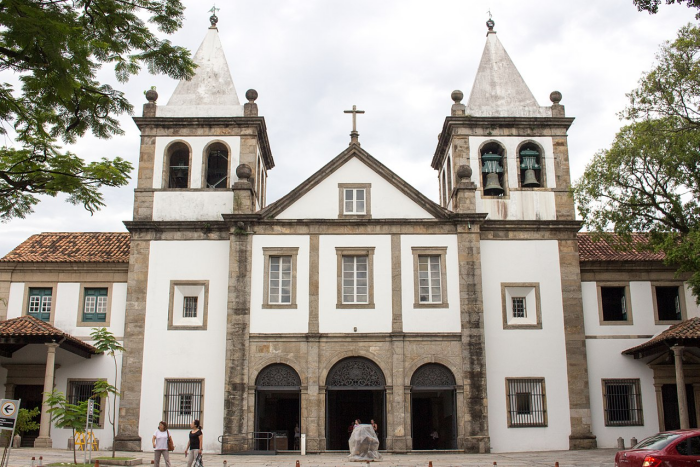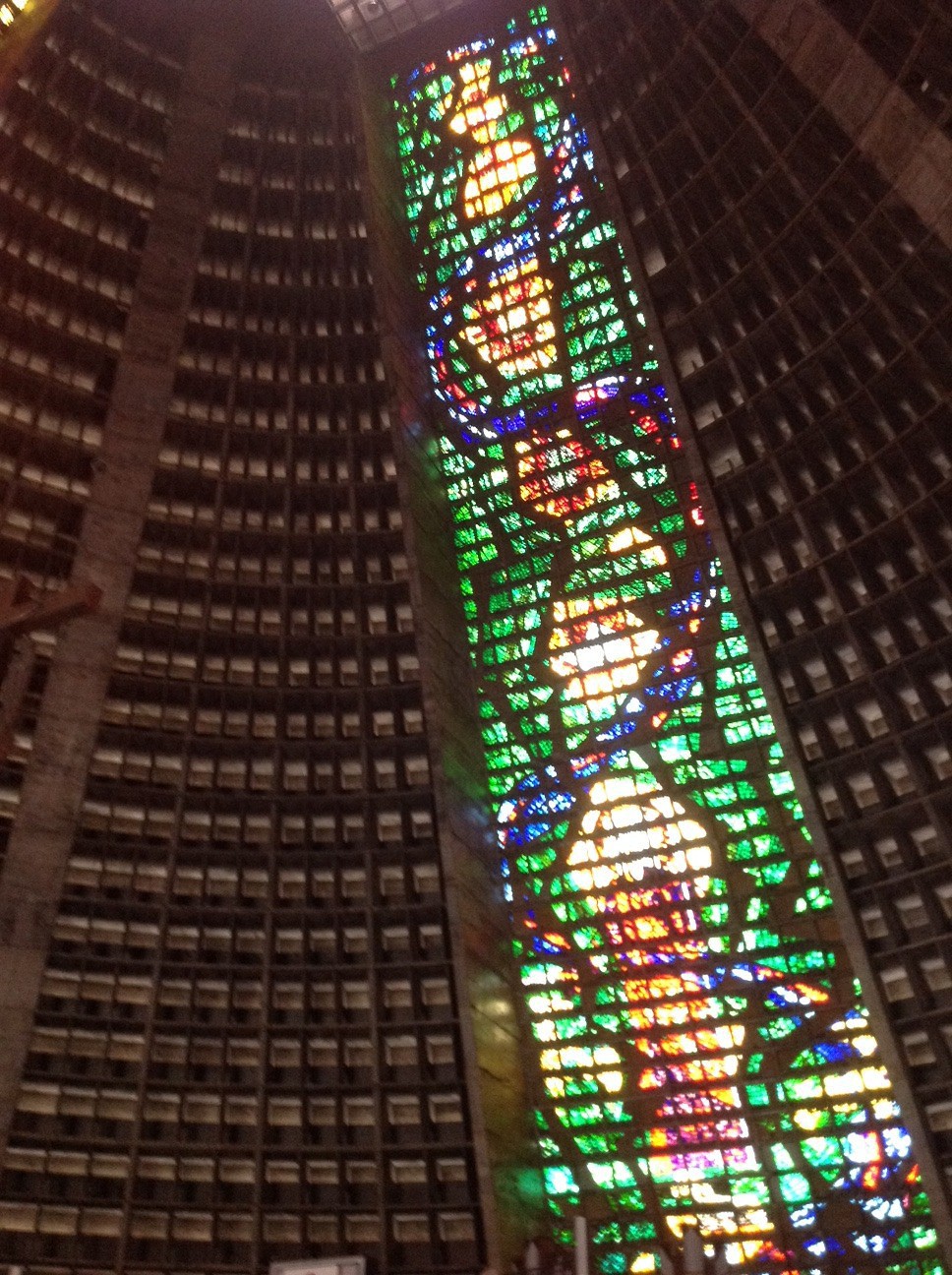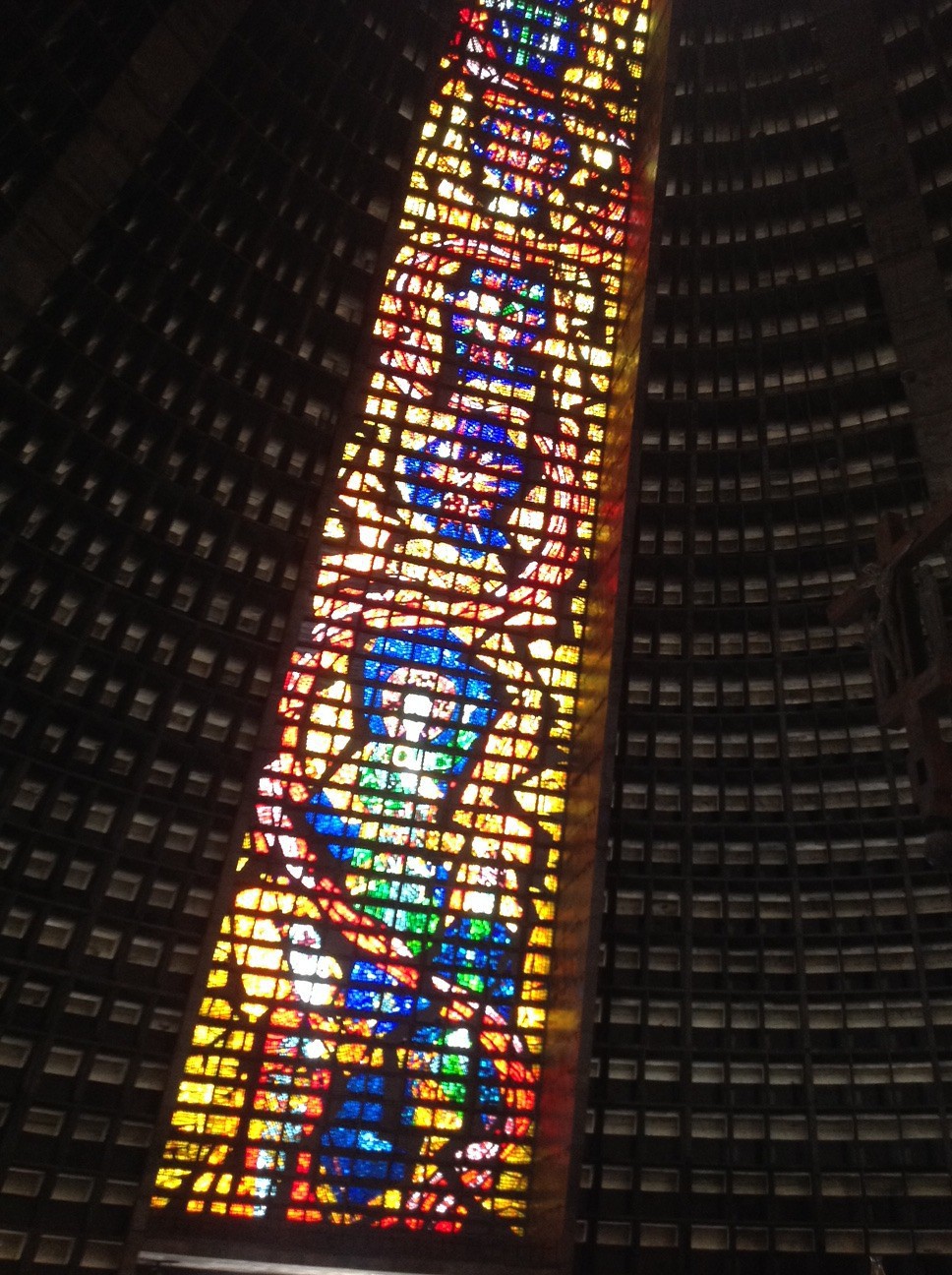A Tour of Rio de Janeiro
Jan 25, 2024 8:03:26 GMT -5
Post by Huronna on Jan 25, 2024 8:03:26 GMT -5

The Abbey of Our Lady of Montserrat,more commonly known as the Monastery of St. Benedict, is a Benedictine abbey located on St. Benedict Hill in downtown Rio de Janeiro, Brazil. The Mannerist style church is a primary example of Portuguese colonial architecture in Rio and the country. The abbey began in 1590 and the final facade was completed in 1880.

The interior of the church is ornately covered in gold leaf gilding, a style popularized during the Baroque period of the seventeenth century and the Rococo period of the eighteenth century.

The red-hot cattail, more commonly known as the chenille plant,Acalypha hispida, is in the euphorbia family and is related to the poinsettia and the castor bean and is native to the East Indies. The bright red flower spikes make this otherwise plain bush a sight to behold. The red is a nice contrast with the dark green, large leaves, both in color as well as in texture. Found in the gardens.

Tomorrow’s Museum is an applied sciences museum which explores the opportunities and challenges Humanity will be forced to tackle in the coming decades. It is in the city of Rio de Janeiro, Brazil. It was designed by Spanish neofuturistic architect Santiago Calatrava, and built next to the waterfront at Pier Maua. Its construction was supported by the Roberto Marinho Foundation and cost approximately 230 million reais. ($46,649,359).

One of the artistic realization of the world with climate change. The glob rotates and changes with the times.

This ship was docked next to the Tomorrow Museum
The FORSA commission was the Inaugural Scientific Cruise of the Hydro-Oceanographic Research Vessel Vital de Oliveira (H39) that made the crossing from Singapore to Rio de Janeiro, when eighteen researchers from FURG, INPE, UERJ, UFPE and UFSM embarked. The measurements were carried out in the region characterized by the formation of vortices of warmer and saline water that “leaks” from the Indian Ocean to the South Atlantic Ocean, through the Agulhas Current. Samples were taken from six anticyclonic vortices launched by the Agulhas Current system, which would later reach the Brazilian coast. This research aimed to verify the influence of the dynamics of currents and climate, in the characterization of the biochemical variables that influence the space-time distribution of marine organisms (phytoplankton, among others).

The Theatro Municipal is an opera house in the Centro district of Rio de Janeiro, Brazil. Built in the early twentieth century, it is considered to be one of the most beautiful and important theaters in the country.

The Carioca Aqueduct, also known as Arcos da Lapa, is an aqueduct in the city of Rio de Janeiro, Brazil. The aqueduct was built in the middle of the 18th century to bring fresh water from the Carioca River to the population of the city. It is a typical example of colonial architecture and engineering.




The Metropolitan Cathedral of São Sebastião of Rio de Janeiro stands out amongst the buildings Downtown. Its unique architecture attracts the attention of everyone who passes by and surprises those who visit it! Its appearance and history are very unusual and make it one of the most curious sights in the city! The Metropolitan Cathedral is 75 meters high and 64 meters high, 106 meters of external diameter and 96 meters of internal diameter. Four stained glass windows are distributed along its diameter, each measuring 64.50 x 17.80 x 9.60 meters.

Sculpture named Homeless Jesus in Rio de Janeiro Brazil
The sculpture was donated to the archdiocese by Canadian artist Timothy Schmalz and was placed outside Metropolitan Cathedral.
Where is the original homeless Jesus statue?
In addition to the original sculpture installed at Regis College in Toronto, a number of copies were on installed in other locations around the world. As of 2017, over 50 copies were created by Schmalz. The price of statues made between 2014 and 2018 varied, ranging from US$22,000 to $40,000.

The bell tower of the Cathedral Metropolitana Sao Sebastian Rio de Janeiro Brazil. The church bells are hung from a 175 foot tall concrete tower.













